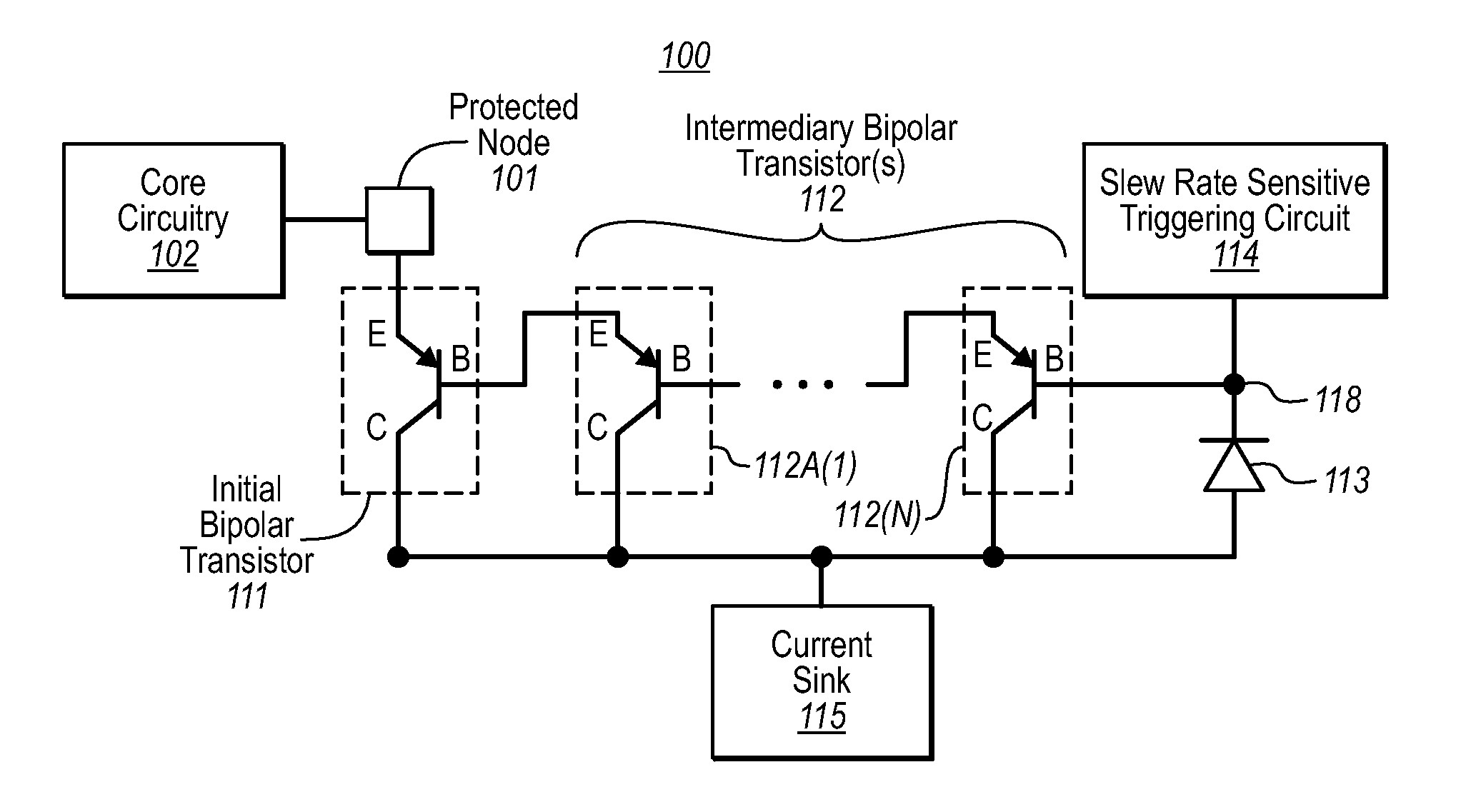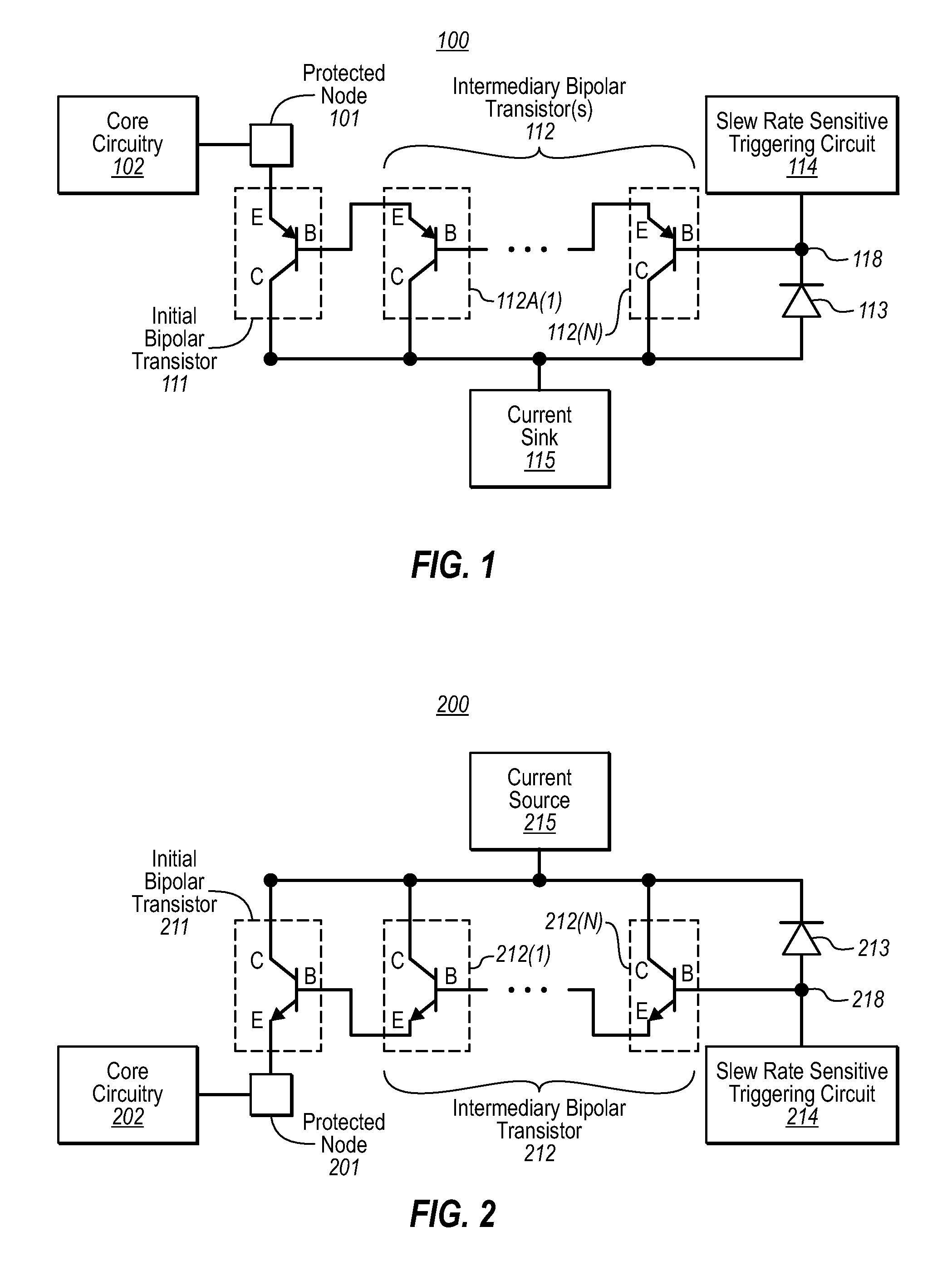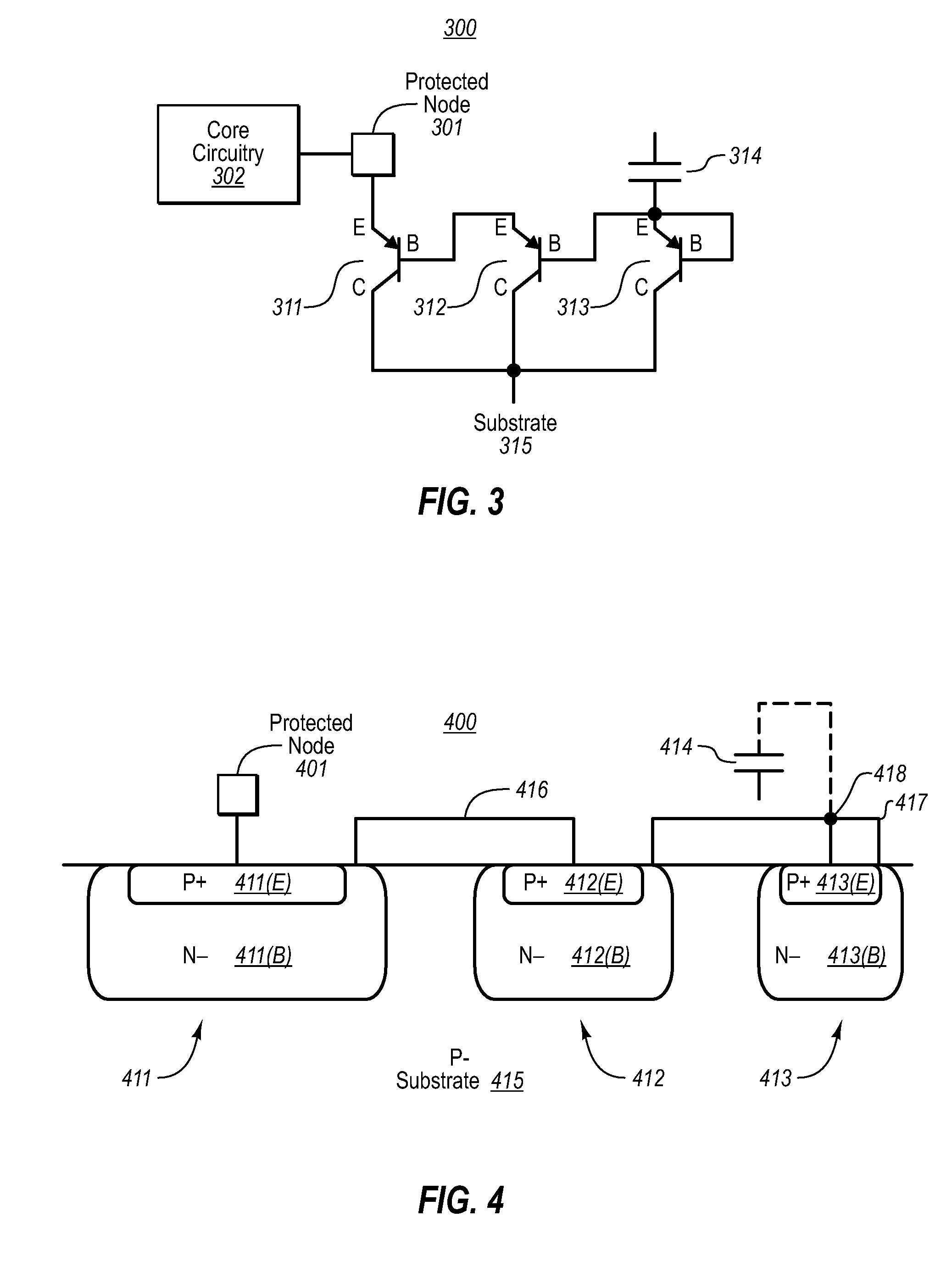Current protection circuit using multiple sequenced bipolar transistors
a current protection circuit and bipolar transistor technology, applied in the direction of transistors, electrical devices, arrangements responsive to excess voltage, etc., can solve the problem of unidirectional current protection circuits, and achieve the effect of reducing the current triggering voltage differential and effective triggering of current protection
- Summary
- Abstract
- Description
- Claims
- Application Information
AI Technical Summary
Benefits of technology
Problems solved by technology
Method used
Image
Examples
Embodiment Construction
[0015]Embodiments of the present invention relate to the use of a current protection circuit configured to provide current protection to a circuit node through a sequence of two or more bipolar transistors and a final reverse-biased diode. FIG. 1 illustrates an example embodiment in which the sequence of bipolar transistors includes PNP bipolar transistors, whereas FIG. 2 illustrates an example embodiment in which the sequence of bipolar transistors includes NPN bipolar transistors.
[0016]A current protection circuit protects a circuit node from experiencing excessive voltages thereby protecting core circuitry that is coupled to the protected circuit node. For instance, the current protection circuitry 100 of FIG. 1 shows a protected node 101 that is coupled to core circuitry 102. The remainder of the current protection circuitry 100 is configured to draw an appropriate amount of current from the protected node 101 so as to keep the protected node 101 from experiencing excessively hi...
PUM
 Login to View More
Login to View More Abstract
Description
Claims
Application Information
 Login to View More
Login to View More - R&D
- Intellectual Property
- Life Sciences
- Materials
- Tech Scout
- Unparalleled Data Quality
- Higher Quality Content
- 60% Fewer Hallucinations
Browse by: Latest US Patents, China's latest patents, Technical Efficacy Thesaurus, Application Domain, Technology Topic, Popular Technical Reports.
© 2025 PatSnap. All rights reserved.Legal|Privacy policy|Modern Slavery Act Transparency Statement|Sitemap|About US| Contact US: help@patsnap.com



